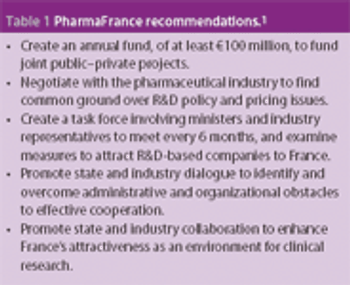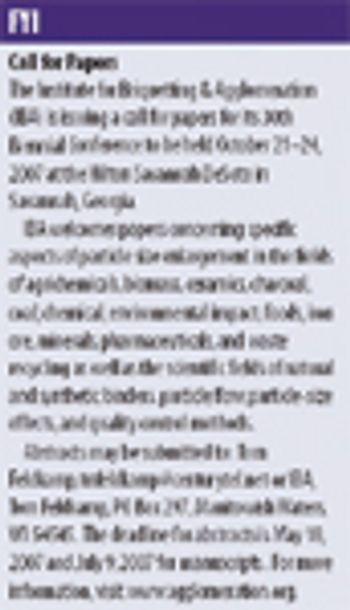
The company begins production at a new $100-million manufacturing facility for prefilled injection systems, plans further investment in packaging facilities, and targets both early-phase development and commercial manufacture.

The company begins production at a new $100-million manufacturing facility for prefilled injection systems, plans further investment in packaging facilities, and targets both early-phase development and commercial manufacture.

An industry survey finds that pharma's outsourcing practices keep the industry from reaping the full benefits of outsourcing.

Although North America accounts for the largest share of the pharmaceutical market, Brazil, China, India, Indonesia, Mexico, Russia, and Turkey are projected to account for almost one-fifth of the global market by 2020. The rising participation in select countries' drug-development activities is evident by recent investment and outsourcing by the pharmaceutical majors.

An industry survey finds that pharma's outsourcing practices keep the industry from reaping the full benefits of outsourcing.

Driven by a rapidly ageing population and a known high consumption of pharmaceuticals, the French pharmaceutical market has always appeared buoyant.

While some companies float with the tide, others grab market share while business is good.

Pharma companies and CMOs build positions in mAbs.

While some companies float with the tide, others grab market share while business is good.

Preferred models for clinical and nonclinical services move in opposite directions.

Preferred models for clinical and nonclinical services move in opposite directions.

The more experienced contract manufacturers go far beyond superficial process improvements, drawing on their own expertise and resources to improve the service, value and flexibility they offer their clients.

Key to the success of outsourcing stability studies is the relationship/partnership between the client and CRO. It involves a high degree of trust and mutual support

...Scotland has a favourable regulatory environment, funding support from its government and some of the most advanced research facilities in the world.

The pharmaceutical industry has long been suffering from declining productivity. The urgent need to infuse change to counter the various challenges, competition and demand has been increasing over the years. It is no longer viable for pharmaceutical companies to depend on complete in-house utilization of the various processes in drug manufacture.

Strong demand is straining service providers' project-management capabilities; Patheon receives a much-needed cash infusion.

The author analyzes the study design, participation, and data pooling from a recent benchmarking study on pharmaceutical manufacturing and raises concerns about the process used and data collected in evaluating the performance of contract manufacturers.

Ricerca Biosciences LLC a contract drug-development company, is embarking on a growth strategy upon which it hopes to double its revenues by 2009. The company recently completed a financial restructuring that includes new equity and term facilities totaling nearly $50 million. That financing will enable Ricerca to implement a multiyear business plan, which includes a $15-million investment to add chemistry and biological laboratories to its site in Concord, Ohio.

Interphex2007, New York, NY (Apr. 24)-Effective project management is critical for successful outsourcing between a pharmaceutical company or sponsor and a contract manufacturing organization (CMO), and the strategies for such success was highlighted at the Interphex2007 Conference and Exhibition.

Interphex, New York, NY (Apr. 24, 2007)-Summarizing the current state of the outsourcing industry, Jim Miller, president of PharmSource Information Services said "It's the best it's ever been and seems to be getting better."

Forty years ago, investors and business speculators shuddered at the prospect of working with India's pharmaceutical industry. The industry was plagued by archaic patent laws and insufficient infrastructure, and only multinational companies (MNCs) were able to exploit its crude resources and monopolistic legal framework. Struggling in the shadows of these MNCs were the Indian pharmaceutical entrepreneurs and a handful of producers. Because more than 70% of the pharmaceutical market value was in the hands of MNCs, India's indigenous pharmaceutical industry was floundering. Its amount of exports was negligible, and the domestic market outlook was bleak because of onerous government regulation.

Strong demand is straining service providers' project-management capabilities; Patheon receives a much-needed cash infusion.

Liability issues are often controversial, but much depends on the nature of the agreement.

As big pharmaceutical companies restructure and reevaluate the way they do business, contract research and manufacturing organizations could reap greater financial rewards.

The low-volume pharmaceutical industry must adapt Lean Manufacturing tools invented for high-volume, single product industries.

As big pharmaceutical companies restructure and reevaluate the way they do business, contract research and manufacturing organizations could reap greater financial rewards.